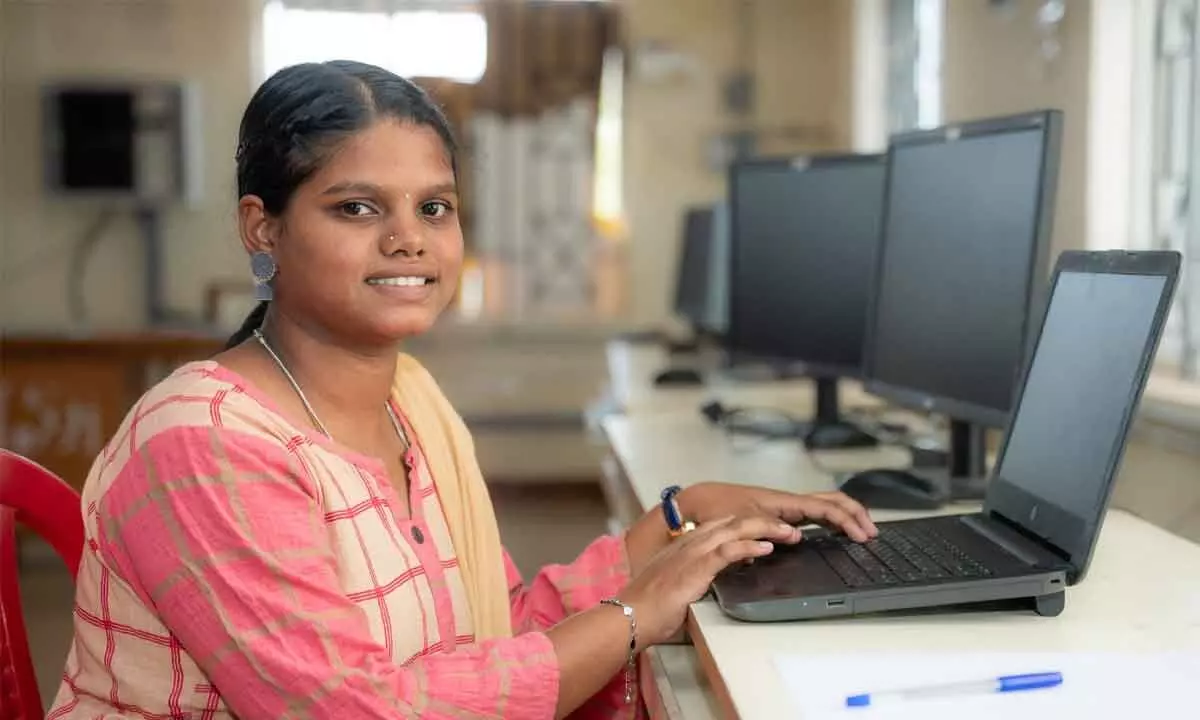How is digital teaching helping in empowering women from smaller towns?

Smaller towns usually have a gendered structure. Even if there are graduate women and girls, they are not encouraged to earn a living by stepping outside of their households. But with digital teaching, they can now easily manage their professional lives at their convenience. For example, they can join one of the many ed-techs out there to start teaching the subjects that they are good at digitally. Here, they can also work on their own time
Technology today is the engine that is driving the wheels of development across the world. With its increased penetration into society, one section that has particularly benefited from this is the womenfolk. Earlier, one could not miss the digital divide between men and women in society. This divide was especially stark in tier 2 and tier 3 locations. The lack of access to gadgets like smartphones along with socio-economic and cultural factors, were some of the major reasons behind this. However, the pandemic changed this scenario to a great extent. The lockdowns and movement restrictions made it necessary for everyone to have a smartphone in their hands to fulfil their social needs.
This has catalysed the development of people in small towns, especially women. Digital pro-vided what women have been seeking for so long - a medium. Rishabh Khanna, Founder & CEO of Suraasa, "Now women from smaller towns can explore opportunities despite the general accessibility issues that exist for them. The safety of women has always been a major concern in traditional households. And this has been a major contributor in some places for women being discouraged from moving out of their houses to explore diverse career options. Digital education here is a leapfrog moment that has brought women the chance to create the career of their dreams from anywhere without worrying about mobility."
Digitalisation & women- The pandemic push
Covid-19 brought with itself a massive tide towards digitalisation. As a result, online classes became the norm, which led to the exploitation of the several benefits of online learning. The freedom of borderless classrooms emancipated everyone and especially women. Women be-came not only consumers of digital education but also its creators. While many of them jumped at the opportunity and started upskilling for personal development, many took to the medium to offer their skills to the world.
As we return to the post-pandemic era, women continue to take advantage of digital education and are empowering themselves with bigger and better prospects. Here are some of the pro-found ways in which digital teaching has been playing a significant role in empowering women from smaller towns:
Women & e-learning
Accessing quality education has always been a hurdle for people in smaller towns, primarily due to limited access to infrastructure and facilities, as one may see in metro cities For wom-en, this gets even tougher due to mobility issues highlighted previously. But with digital learn-ing, where you can learn from anywhere, women are able to learn at their own pace and com-fort. They are also able to access the quality of education and facilities that puts them at par with people in metro cities. For example, with e-learning, they can learn from the same profes-sor in the USA as their metro city counterparts.
According to the Unified District Information System for Education Plus 2019-'20 report, over 15% of girls drop out of schools at the secondary level across the country. The report also states that there are 14 states that exceed the national average, with Assam touching a signif-icant 33%.
With e-Learning coming into the scenario, women are now encouraged to continue their edu-cation and complete it instead of abandoning it mid-way due to mobility hurdles and time con-straints that were common with a physical mode of learning. Digital learning has revolutionised education for women by bridging the best learning opportunities from across the world to their homes. It has equalised the opportunities for them and pushes them to explore upskilling pos-sibilities to move up their career ladder.
Women & digital teaching
The digital medium has also allowed women to deliver their skills to the world. With just a smartphone and an active internet connection, women from even the remotest location can now easily use their knowledge and skills to generate income while also managing their daily responsibilities.
Smaller towns usually have a gendered structure. Even if there are graduate women and girls, they are not encouraged to earn a living by stepping outside of their households. But with digi-tal teaching, they can now easily manage their professional lives at their convenience. For ex-ample, they can join one of the many ed-techs out there to start teaching the subjects that they are good at digitally. Here, they can also work on their own time.
They do not have to move from one place to another but just move from one web link to an-other. These women can also set flexible learning schedules that do not clash with the daily responsibilities expected of them in those traditional setups. They can still enjoy credibility and income according to their skills and time invested without stressing over their job location or other such issues.
Summing up
According to the UN Report on gender Equality 2016, digital technology, along with property and finance, are the three vital assets for gender equality. The plethora of opportunities that digital teaching brings to women from smaller towns is a testimony to that.
They can now stand to empower themselves and achieve equality in ways in line with their ambitions. With this taking the right shape, we will now be able to bring to life the inclusive global socio-economic growth that we have been envisioning for so long.

















